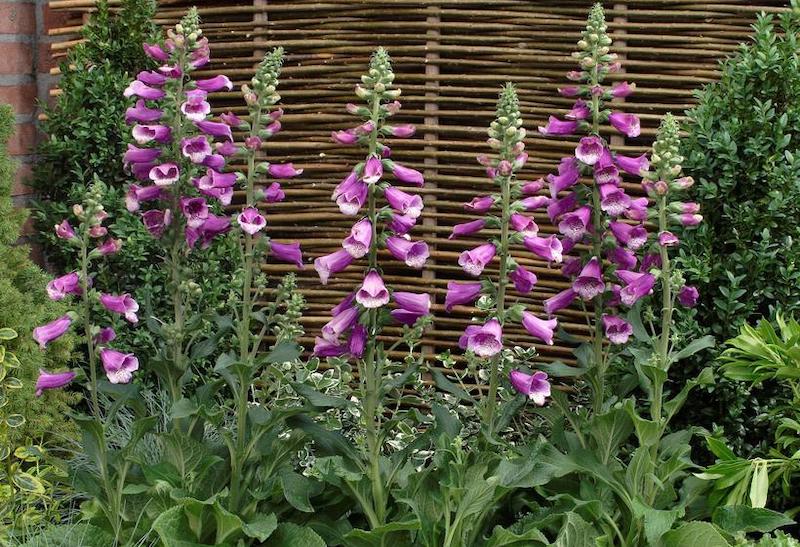Digitalis purpurea is the scientific name for the common Foxglove. This is an herbaceous biennial or in the case of some hybrid cultivars, a short-lived perennial, which thrives in cooler climates and requires little maintenance. Foxglove is notorious for its prolific self-seeding abilities, but with well-timed deadheading and judicious pulling of seedlings in early spring, it can be tamed into a stately and beautiful star of your garden border.

What You Need To Plant Foxglove
- Small garden spade or transplanting shovel
- Organic compost or other natural material for mulch
- Water
- Sunny location
- Well-draining soil with a slightly acidic or neutral pH
- Garden gloves
Where to Plant Foxglove
Foxglove grows best in a location with part sun to part shade and well-draining soil. The edge of a woodland garden in dappled sun will protect plants from the hottest part of the day while supporting blooming. Foxgloves are not heavy feeders and will not need fertilizing in moderately rich soil. An annual topdressing with organic compost is usually sufficient to support healthy growth and blooming.
Foxglove Spacing
Most Foxglove varieties reach a height of 3-5 feet when in full bloom, but stay a compact 18 to 24 inches in width. Space plants 16 inches apart to allow room for good air circulation while plants are young. When the flower spikes form the second year, the plants will be close enough to support each other without extra staking needed.
Steps To Plant Foxgloves
Step 1 - Choose a location that has relatively deep soil. The base of trees may not have enough soil to support Foxglove growth.
Step 2 - Dig a hole twice as wide and the same depth as the rootball.
Step 3 - Carefully remove the plant and rootball from the growing container. Gently tease the roots apart if it has become rootbound.
Step 4 - Place the rootball in the ground so that the base of the plant is level with the soil. Replace the soil in the hole, gently firming it around the rootball to remove any large air pockets.
Step 5 - Water the plant in well to remove any large air gaps from around the root ball. Soak the soil thoroughly.
Step 6 - Mulch around the base of the plant with 2-3 inches of compost or finely shredded arborist chips, keeping the mulch away from the base of the plant and foliage.
When to Plant Foxgloves
Foxglove seedlings are best transplanted late in the winter when the soil is easily worked and not too muddy. Container-grown plants can be planted at any time during the growing season as long as supplemental watering is provided. Keep the soil evenly moist to help the transplants establish quickly.
Transplanting Foxglove
Foxglove will begin self-seeding soon after pollination in midsummer. The new seedlings are easy to either thin out or pull altogether. The root systems are not aggressive and quite shallow. Seedlings can also be replanted in late summer to grow and develop in just the right location. The perennial varieties of Foxglove can be divided in early spring before flowering. When dividing, make sure to include as much of the root system as possible on each clump of transplants.
 |
Author Robbin Small - Published 6-25-2023 |
